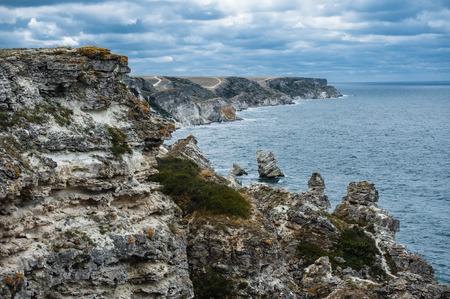Introduction to the South West Coast Path
There’s a wild edge to Britain, where land meets sea in an unbroken ribbon of rugged cliffs, golden sands, and weather-beaten headlands. This is the South West Coast Path—England’s longest and most legendary national trail. Spanning a staggering 630 miles from Minehead in Somerset to the shores of Poole Harbour in Dorset, this path is not merely a walk; it’s an audacious journey that dares you to chase the horizon. It’s a siren call to adventurers, ramblers, and lovers of raw coastal drama. The South West Coast Path isn’t just a route—it’s an epic saga inscribed into the very bones of Britain’s southern coastline, where every mile tells tales of smugglers, shipwrecks, ancient settlements, and relentless Atlantic storms. For those bold enough to embark on its winding course, the path offers not only breathtaking scenery but also a profound encounter with the untamed heart of England.
2. Prepping for the Challenge
Embarking on the South West Coast Path isn’t just a stroll along the seaside—its a full-blown adventure demanding robust planning, resilient kit, and a steely mindset. With nearly 630 miles of Britain’s most volatile coastline to conquer, preparation is your first real test.
Route Choices: Picking Your Battle
This legendary path twists from Minehead in Somerset to the dramatic cliffs of Poole Harbour in Dorset. Some adventurers go all-in, tackling the entire route in one relentless push. Others break it into sections, cherry-picking stretches like the rugged North Devon cliffs or Cornwall’s wild Atlantic edge. Whatever your approach, timing matters: spring offers wildflowers and fewer crowds; summer brings long days but unpredictable weather; autumn gifts golden light and quieter trails.
Essential Kit: What You Can’t Do Without
The British coastline is notorious for its mood swings—sunshine one minute, horizontal rain the next. Skimp on kit and you’ll pay for it. Here’s a no-nonsense breakdown:
| Kit Essential | Why You Need It | UK-Specific Tip |
|---|---|---|
| Waterproof Jacket & Trousers | Soakings are inevitable—embrace it. | Look for “stormproof” ratings. |
| Sturdy Boots | Mud, scree, and relentless up-and-downs. | Ankle support is crucial—don’t scrimp. |
| OS Maps / GPS | Signage can vanish in fog or after storms. | Download offline maps; mobile signal is patchy. |
| Layered Clothing | The only constant is change—layer up or down. | Merino wool thrives in British dampness. |
| First Aid Kit & Blister Plasters | You’ll earn every blister—prep ahead. | Add midge repellent for Devon & Cornwall evenings. |
| Refillable Water Bottle & Snacks | Cafés are sparse outside towns—self-sufficiency is key. | Cornish pasties travel well; stock up! |
Mental Grit: Training Your Mind for the Miles Ahead
This isn’t just about leg muscles—it’s a battle with your own resolve. Be ready for punishing ascents, energy-sapping wind, and endless stretches where civilisation feels like a rumour. Set daily mileage goals that challenge but don’t destroy you; celebrate every headland conquered. Track progress with a journal or app—it’s a morale lifeline when fatigue bites. Most importantly, embrace unpredictability: rain, detours, and stunning sunsets all come bundled together on Britain’s wildest trail. Get prepped—and get ready to earn every mile.

3. Navigating the Dramatic Landscapes
Brace yourself for a journey that plunges you headlong into some of England’s most awe-inspiring terrain. The South West Coast Path is no gentle ramble; it’s an epic adventure carved along the very edge of the kingdom, where the land surrenders to the untamed Atlantic. From the windswept cliffs of Somerset, through Cornwall’s wild headlands and Devon’s rolling moorlands, all the way to Dorset’s fossil-studded Jurassic Coast, each mile presents a new challenge—and a fresh thrill.
Clifftop Exhilaration
Picture yourself striding atop jagged escarpments, salt spray stinging your face as gulls wheel overhead. The cliffs here are not just scenery—they’re formidable adversaries. Steep ascents and knee-buckling descents keep your heart pounding, with every crest revealing panoramic views that make your efforts worthwhile. At Hartland Quay or Tintagel, you’ll feel like you’re teetering on the world’s edge, buffeted by winds that have shaped legends and shipwrecks alike.
Secret Coves and Hidden Havens
Between these dramatic heights lie secluded coves—nature’s secret hideaways only accessible by foot. Descend winding paths to stumble upon places like Porthcurno or Lulworth Cove, where turquoise waters lap golden sand and smugglers’ tales linger in the air. Here, you can catch your breath, dip weary feet in cool surf, or simply marvel at how such tranquillity exists so close to the path’s relentless wildness.
The Rugged Heart of Moorland
Pressing inland for brief intervals, the trail sweeps across heather-clad moors alive with birdsong and bracing winds. In Devon and Cornwall especially, you’ll traverse ancient trackways bordered by stone walls and gorse bushes ablaze with yellow flowers. The solitude is profound—just you, your boots, and a boundless sky—as you test your mettle against weather that changes in a heartbeat.
Navigating this ever-changing landscape demands more than sturdy boots; it calls for grit, curiosity, and a taste for adventure. Yet every step rewards with scenes so breathtaking they etch themselves into memory: thunderous surf below crumbling precipices, sunlight slanting through sea mist over endless green hills, and a sense of connection to generations of explorers who’ve faced these wild edges before you.
4. Iconic Highlights and Local Encounters
As you trek along the South West Coast Path, every bend in the trail offers up a new spectacle or local curiosity. This isn’t just a walk; it’s an odyssey through some of the UK’s most dramatic coastal scenery and a deep dive into the heart of the Southwest’s unique character. Wind-battered headlands such as Land’s End and Hartland Point challenge both your legs and your resolve, while panoramic clifftop views serve up endless photo opportunities for those willing to brave the elements.
Windswept Headlands & Rugged Beauty
Nothing quite matches the thrill of standing atop a Cornish promontory, salt spray stinging your face, with nothing but open sea stretching out before you. Here, the landscape demands respect—sheer drops and rolling Atlantic swells are ever-present reminders of nature’s raw power. The path threads through wildflower meadows in spring and bracken-clad slopes in autumn, each season painting the coast anew.
Ancient Harbours & Living History
Dotted along the route are harbours that have weathered centuries: Port Isaac, Clovelly, and Padstow brim with tales of fishermen, smugglers, and shipwrecks. These aren’t just postcard-perfect scenes—they’re living communities where maritime traditions still shape daily life. Fishermen mend nets on stone quaysides, while local pubs serve up fresh catch paired with a pint of proper ale.
Traditional Seaside Villages
The path winds through villages that seem plucked from another era—think pastel cottages in St Ives or the cobbled lanes of Lynmouth. It’s here you’ll find a slower pace, friendly banter, and hearty fare (don’t miss out on a freshly baked Cornish pasty or cream tea). Each stop is an invitation to linger and soak up stories from locals who know every twist of coastline by heart.
Standout Spots Along the Path
| Location | Highlight |
|---|---|
| Land’s End | Sweeping Atlantic views & iconic signpost |
| Lulworth Cove | Unique geology & crystal-clear waters |
| St Ives | Artists’ enclave & sandy beaches |
| Clovelly | Cobbled streets & fishing heritage |
| Padstow | Culinary hotspot & working harbour |
A Tapestry of Local Culture
The South West Coast Path doesn’t just connect places—it weaves together centuries of stories, regional flavours, and wild adventure. Every mile introduces you to the resilient spirit of the Southwest: communities forged by wind, tide, and time. Whether you’re swapping tales with a local at a harbourside pub or catching sight of seals basking below rugged cliffs, these encounters turn each step into part of an ongoing legend.
5. Battling the Elements: Weather, Wildlife, and Wayfinding
If you think you know British weather, think again. The South West Coast Path is where forecasts go to die and waterproof jackets earn their stripes. One minute you’re basking in glorious sunshine atop windswept cliffs, the next you’re lashed by horizontal rain that seems to come from every direction at once. There’s a peculiar thrill in facing down these meteorological mood swings—each squall or sudden fog bank is a reminder that nature calls the shots out here.
Wildlife encounters are par for the course, but don’t expect just docile sheep dotting the hillsides. I’ve stared down red deer emerging ghost-like from the morning mist on Exmoor, been startled by adders sunning themselves on narrow paths, and watched grey seals bobbing just offshore, their curious eyes following my progress. Gulls will eye your pasty with calculated menace, while mischievous ponies on Dartmoor have been known to rifle through unattended backpacks. Every day brings a new cast of characters that can turn a routine stroll into a full-blown adventure.
Wayfinding on the South West Coast Path is its own rite of passage. The acorn symbol marks the official route, but don’t get too complacent—the path twists and turns through tangled woodland, dips down secret coves, and climbs over ancient stone stiles. Fog can swallow landmarks whole, and tidal crossings can catch out the unwary. Maps are essential (old school Ordnance Survey preferred), and GPS is handy—but nothing beats local advice in a village pub after a long day’s hike. The sense of achievement when you finally spot that next waymarker after a stretch of uncertainty is second to none.
Tackling England’s longest national trail means embracing unpredictability. You’ll curse the elements one moment and marvel at rainbow-lit seascapes the next; you’ll detour around an obstinate herd of cows or double back after a wrong turn, only to discover a hidden waterfall or deserted beach. Out here, the wildness isn’t just part of the scenery—it’s part of your journey.
6. Reflections and Rewards of the Adventure
Completing the South West Coast Path is not merely a tick on the bucket list—it’s a full-throttle adventure that etches itself into your bones. The physical challenges are relentless: aching calves after scrambling up vertiginous cliffs, wind-burnt cheeks from days spent bracing against Atlantic gusts, and those moments when rain lashes sideways with classic British ferocity. Yet, every blister is a badge of honour, each muddy stumble a story to retell in cosy Cornish pubs.
Pushing Past Limits: The Grit Required
This journey tests your mettle as much as your muscles. There are stretches where exhaustion nips at your heels, where the path seems to disappear into wild gorse and you wonder if you’ve lost your way—or your marbles. But it’s precisely in these crucibles that inner resilience is forged. The mind learns to quiet its doubts, focusing on nothing but the crunch of gravel underfoot and the next horizon.
Camaraderie on the Trail
No one conquers England’s coastal gauntlet alone. Along the way, fellow hikers—be they seasoned ramblers or wide-eyed first-timers—become allies. Tales are swapped over steaming mugs of tea in wind-battered cafés, advice shared on weathering Devon’s notorious switchbacks or sourcing the best pasties in Padstow. There’s a unique kinship in enduring hardship together; strangers become companions bound by mud-spattered boots and shared sunsets over Lyme Bay.
The Lasting Impact
When you finally reach that last signpost at Poole Harbour or Minehead, it’s more than just an end; it’s a transformation. The South West Coast Path doesn’t simply show off England’s rugged beauty—it demands respect and rewards perseverance. You leave with legs toughened by miles, eyes opened to new vistas, and a heart filled with stories only those who’ve faced the elements can truly understand. This is more than a walk; it’s an odyssey that shapes you long after the salt has been washed from your skin.


